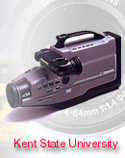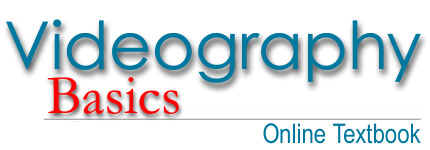

Macintosh Operating System Terms and Activities
You should be able to explain how to:
- start a Mac
- select an object
- move an object
- open a window
- move a window
- copy a file from one location to another
- delete a file
- remove a disk from a drive
- resize a window
- close a window
- look at the contents of a portable storage disk such as a CD, Zip or floppy disk
- create and name a new folder
- determine if there are any applications open and close them
- shut down the computer or put it into the sleep mode
You should be able to define:
- click-and-drag
- status bar
- title bar
- application
- menu bar
- scroll bars
- zoom and windowshade buttons
Adobe Premiere Terms and Activities
You should be able to define:
- source files
- project file (.ppj), movie file (.mov)
- project window
- clip
- monitor window
- source view, program view
- controller buttons
- trim mode
- timeline window
- time ruler
- edit line
- scrubbing
- video tracks, audio tracks, transitions track
- transitions window
- in-point and out-point
- trim pointer
- markers
- audio waveform
You should be able to explain how to:
- open the monitor or timeline window if you don’t see it on the screen
- import several files into a project
- change the project window to show its icon, thumbnail or list views
- save and name a project
- play a video clip (several different ways)
- edit video files so that one follows another without a break
- change the timeline window’s appearance
- change the time unit designation
- use a shortcut to return the edit line to the beginning of a project
- set in-points and out-points
- set markers
- lock a track to avoid changing or moving it by mistake
- stretch a one-frame still graphic to cover more time
- export a movie
Basic Editing
What are the major reasons for editing? You should be able to answer in detail. Your answer might include some of the following concepts: condense, correct, combine, audience expectations and interest, combinations that conflict or reinforce, sequencing, enhancing, additive and subtractive editing, and appropriateness.
In one of the articles you read, author Don Collins said, "Organization is the key to efficient editing." What does he mean? Did anything in your class experience reinforce this important idea?
What is the advantage of random access?
All the video clips you worked with in this class had names. But what if you were creating a project with new video clips? What rules-of-thumb would you follow for naming the clips?
What is rendering and why is it important?
Continuity Editing
What is a cut? When and why should you use it?
What is a matched action edit? How do you prepare for it?
What is a fade? What is a dissolve or cross-fade? When and why should you use these transitions? How long should they take?
What are wipes and other special effects transitions used for?
Which transition is most common? Why?
Special Effects and Titles
What are the benefits and problems associated with special effect transitions?
What are some different ways to put titles into a video program?
What are the elements and principles of title design?
Define the following terms: readability, placement, type size, typeface, safe area, title style, roll, crawl.
What are the title design rules regarding color? regarding placement on the screen?
Home Page | Assignments | Syllabus | Instructor | JMC Web Site